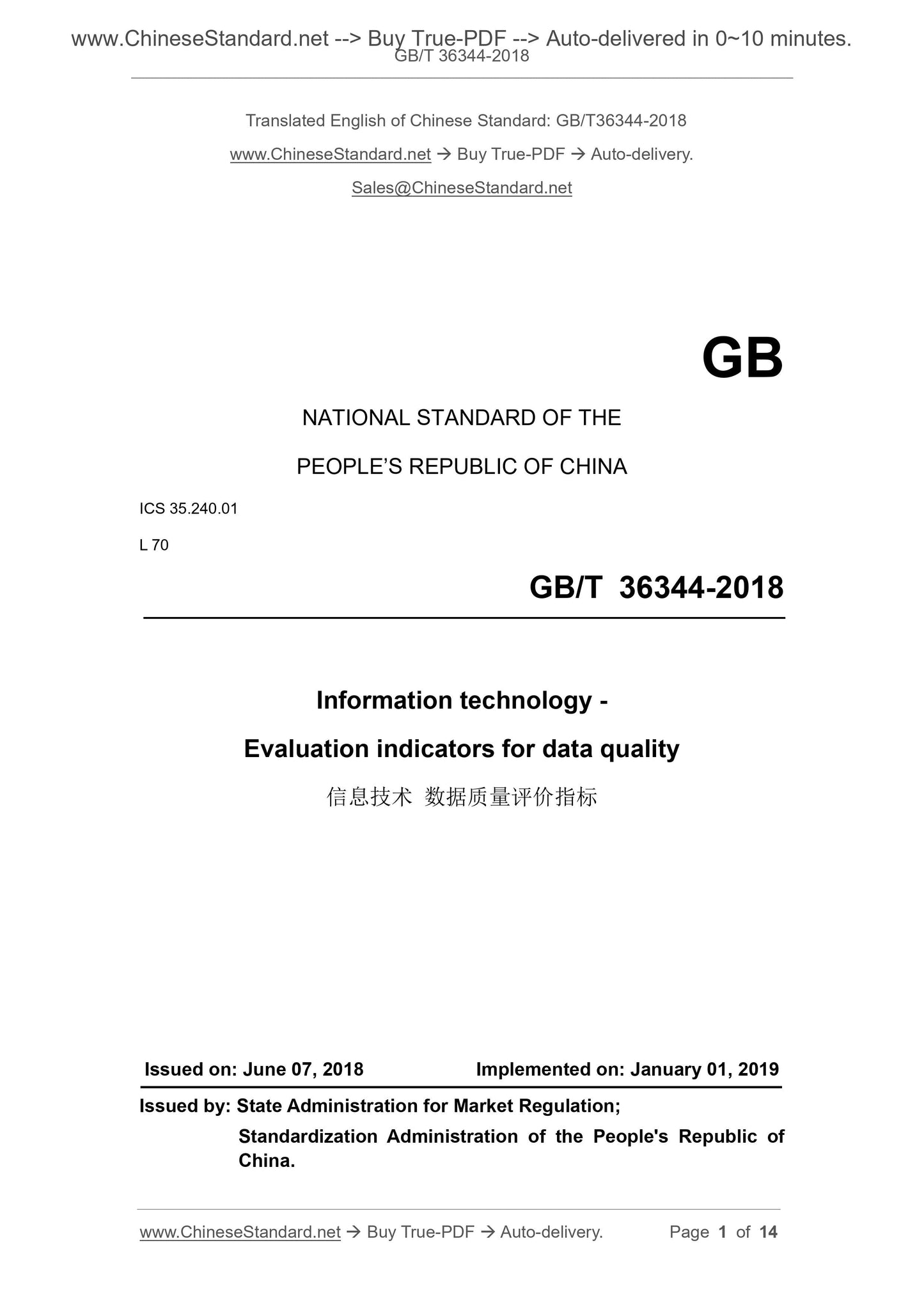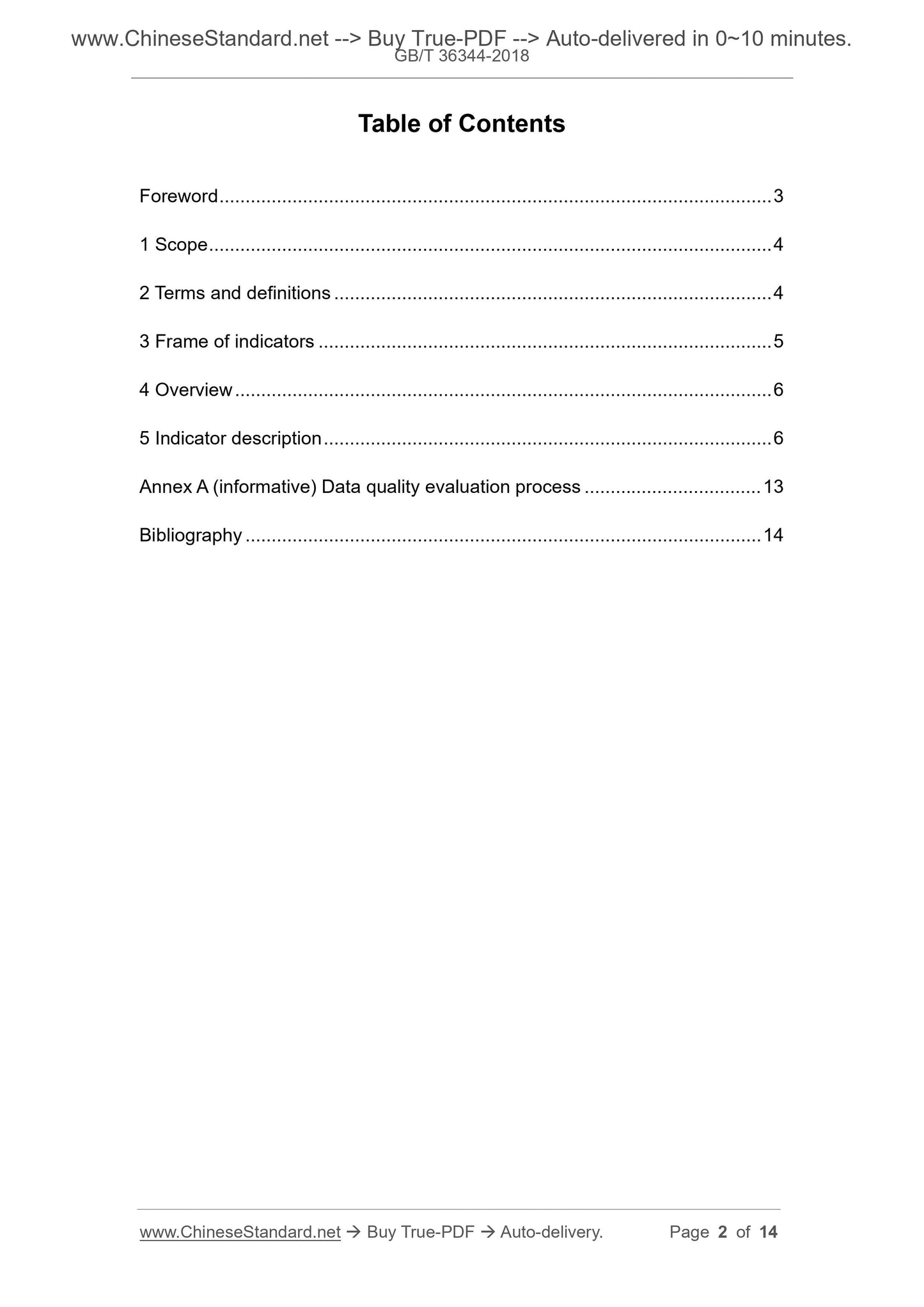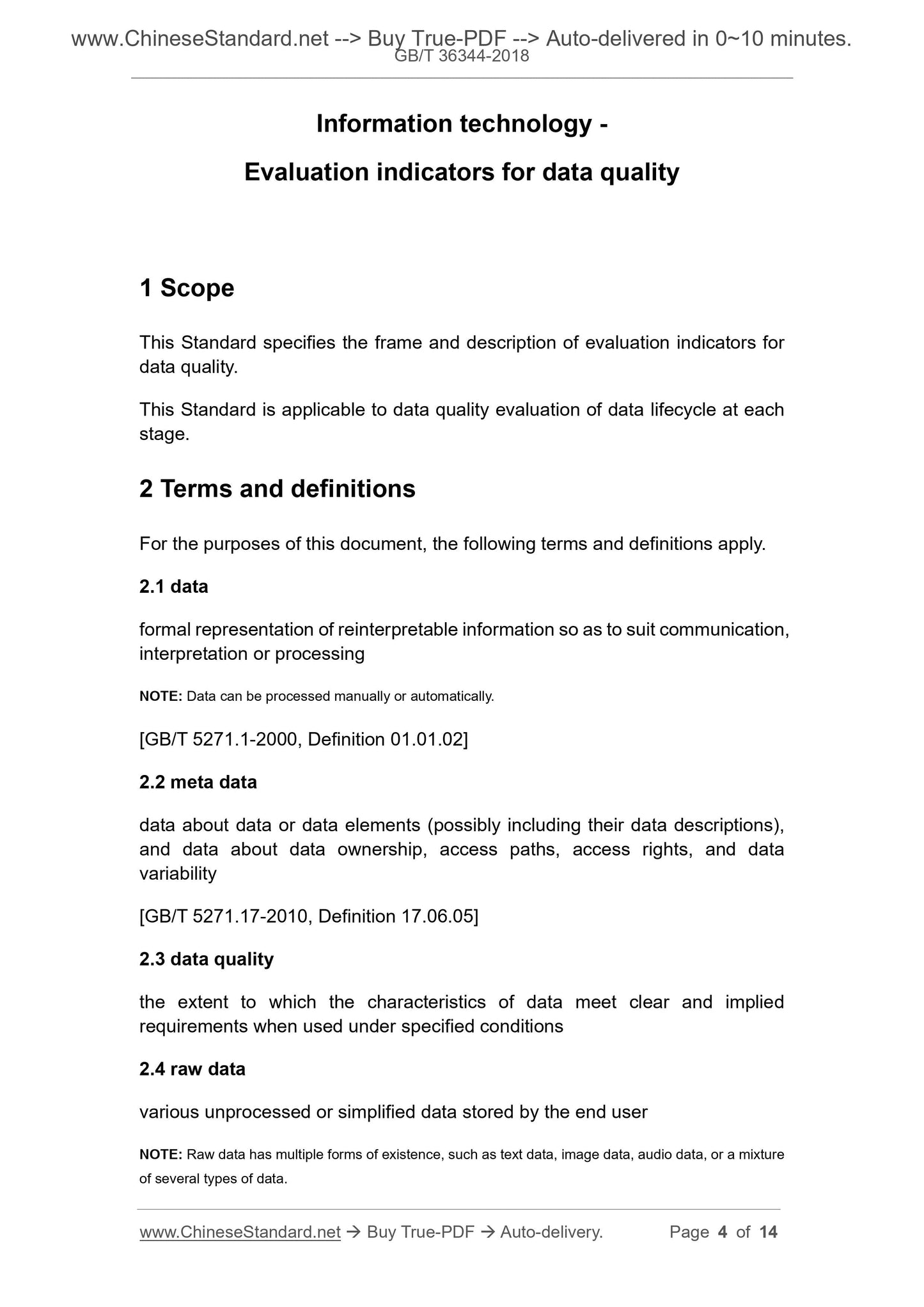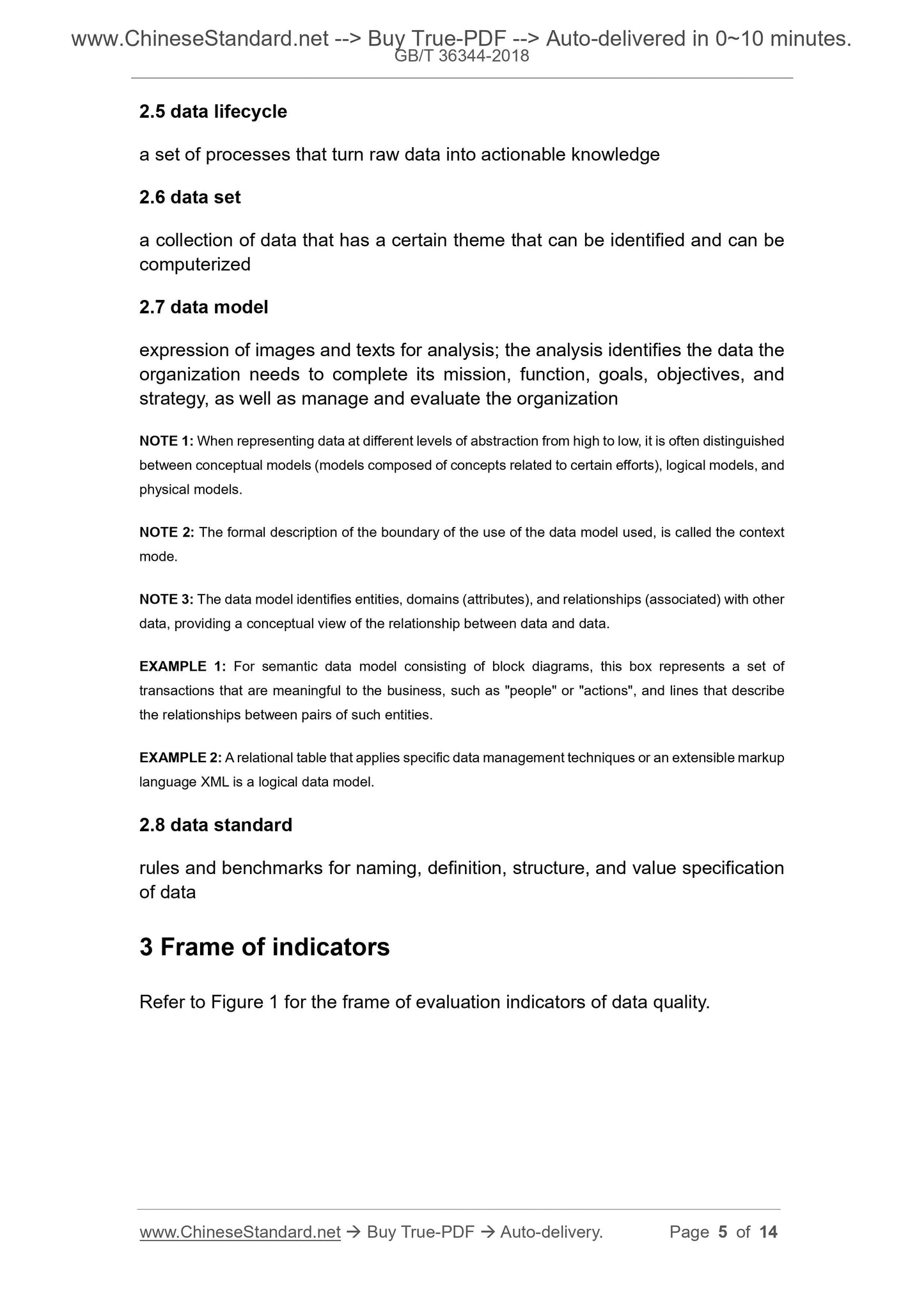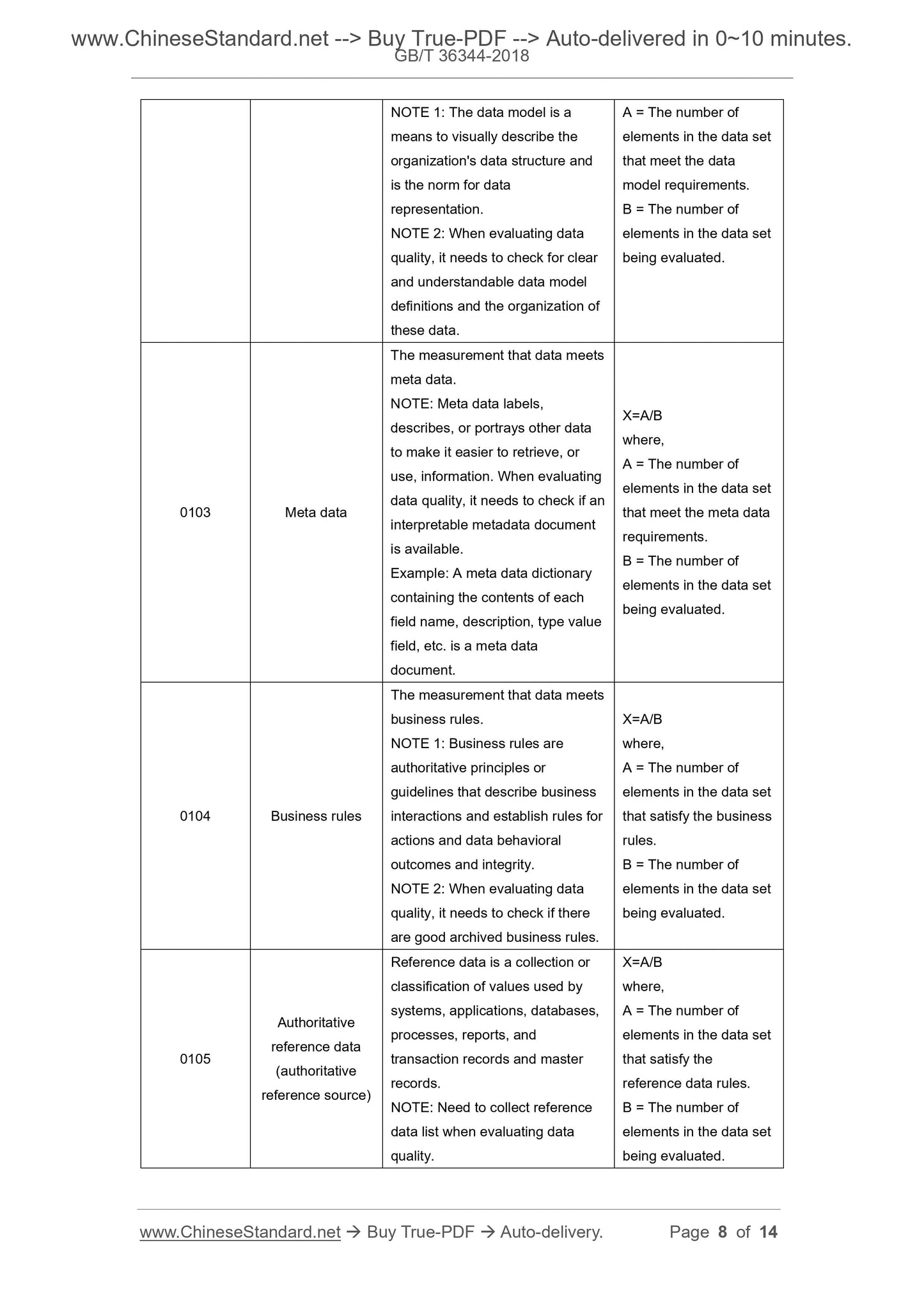1
/
of
6
www.ChineseStandard.us -- Field Test Asia Pte. Ltd.
GB/T 36344-2018 English PDF (GB/T36344-2018)
GB/T 36344-2018 English PDF (GB/T36344-2018)
Regular price
$150.00
Regular price
Sale price
$150.00
Unit price
/
per
Shipping calculated at checkout.
Couldn't load pickup availability
GB/T 36344-2018: Information technology - Evaluation indicators for data quality
Delivery: 9 seconds. Download (and Email) true-PDF + Invoice.Get Quotation: Click GB/T 36344-2018 (Self-service in 1-minute)
Newer / historical versions: GB/T 36344-2018
Preview True-PDF
Scope
This Standard specifies the frame and description of evaluation indicators fordata quality.
This Standard is applicable to data quality evaluation of data lifecycle at each
stage.
Basic Data
| Standard ID | GB/T 36344-2018 (GB/T36344-2018) |
| Description (Translated English) | Information technology - Evaluation indicators for data quality |
| Sector / Industry | National Standard (Recommended) |
| Classification of Chinese Standard | L70 |
| Classification of International Standard | 35.240.01 |
| Word Count Estimation | 10,174 |
| Date of Issue | 2018-06-07 |
| Date of Implementation | 2019-01-01 |
| Issuing agency(ies) | State Administration for Market Regulation, China National Standardization Administration |
Share
